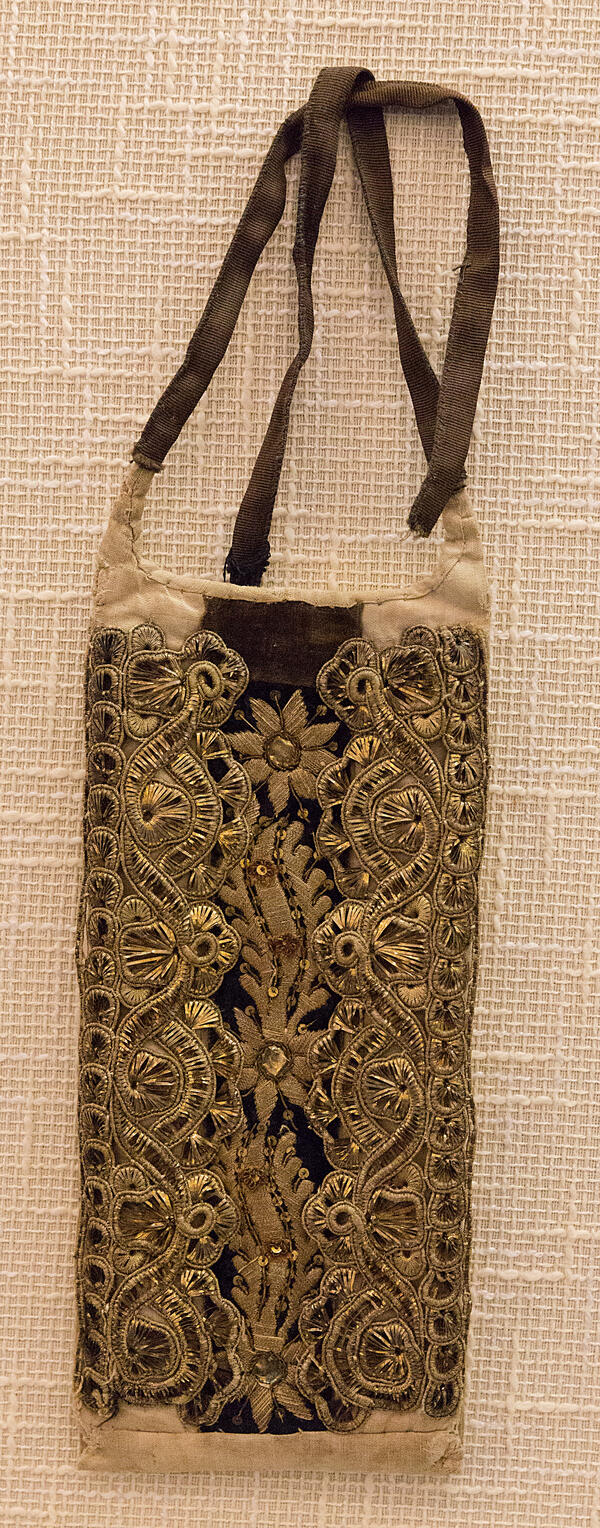The traditional clothing of Jewish women included silk or cotton skirts, open jackets with a vest, and breast ornaments. Influenced by the fashions of the various countries in which Jews lived, as well as by restrictions imposed on the right to wear national dress, Jewish costume was constantly changing. There are three elements of the outfit that remained compulsory: the brustichl, the headdress, and the apron.
An everyday brustichl was a strip of ribbon from the neck of the dress to the waist. The elegance of the silk fabric was emphasized by delicate embroidery. The breast ornament for girls was a symbol of modesty and purity, as well as a talisman against the evil eye.
For a bright and ornate festive brustichl, the base was made of thick cardboard or canvas. It was trimmed with silk, velvet or brocade. The cloth was decorated with sequins, gold embroidery, tinsel thread, inlays of colored glass and artificial pearls. Spanish metallized lace added a particular luxurious feel to it.
In the second half of the 19th century metal lace was produced in Eastern Galicia and Mogilev Province and was made only by men. The lace was used to decorate clothes and synagogue textiles: yarmulkes, tallits, parokhets and kapporets. This technique was very popular among the Jewish population of Poland, Russia and the Austro-Hungarian Empire.
The expensive ceremonial brustichls were cherished in the family and handed down from grandmother to granddaughter for many generations. By the early 20th century, they went out of use, but thanks to being kept as heirlooms, they have been well preserved and made their way into museum collections. The brustichls from the collection of the Russian Museum of Ethnography are decorated with strips of velvet, gold embroidery, sequins, foil, inlays of colored glass and pearls. Strips of metallic Spanish lace Spanier Arbeit are sewn on the edges.
In the museum collections, there is a female ornament that looks like a square-shaped silk handkerchief. This item is also registered as a brustichl — when folded, the shawl was attached at the collar on the chest. This suggests the preserved tradition of women’s breast ornaments and the variety of their forms. In orthodox Jewish families brustichls were part of women’s costume until the revolution of 1917.
An everyday brustichl was a strip of ribbon from the neck of the dress to the waist. The elegance of the silk fabric was emphasized by delicate embroidery. The breast ornament for girls was a symbol of modesty and purity, as well as a talisman against the evil eye.
For a bright and ornate festive brustichl, the base was made of thick cardboard or canvas. It was trimmed with silk, velvet or brocade. The cloth was decorated with sequins, gold embroidery, tinsel thread, inlays of colored glass and artificial pearls. Spanish metallized lace added a particular luxurious feel to it.
In the second half of the 19th century metal lace was produced in Eastern Galicia and Mogilev Province and was made only by men. The lace was used to decorate clothes and synagogue textiles: yarmulkes, tallits, parokhets and kapporets. This technique was very popular among the Jewish population of Poland, Russia and the Austro-Hungarian Empire.
The expensive ceremonial brustichls were cherished in the family and handed down from grandmother to granddaughter for many generations. By the early 20th century, they went out of use, but thanks to being kept as heirlooms, they have been well preserved and made their way into museum collections. The brustichls from the collection of the Russian Museum of Ethnography are decorated with strips of velvet, gold embroidery, sequins, foil, inlays of colored glass and pearls. Strips of metallic Spanish lace Spanier Arbeit are sewn on the edges.
In the museum collections, there is a female ornament that looks like a square-shaped silk handkerchief. This item is also registered as a brustichl — when folded, the shawl was attached at the collar on the chest. This suggests the preserved tradition of women’s breast ornaments and the variety of their forms. In orthodox Jewish families brustichls were part of women’s costume until the revolution of 1917.


